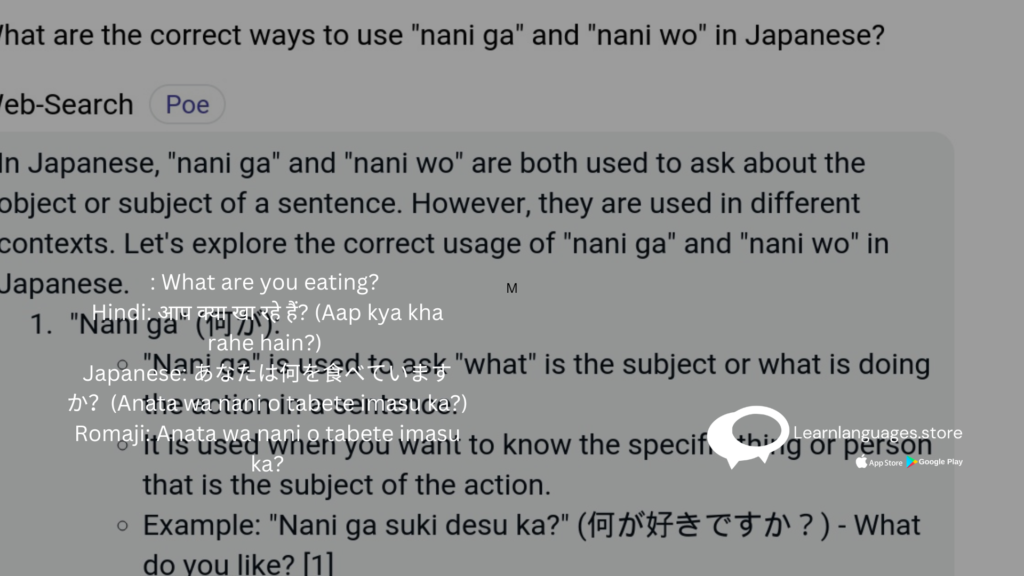Unraveling the Mystery of “What” in Japanese: A Hilarious Dive into the World of 何 (Nani)
Unraveling the Mystery of “What” in Japanese: A Hilarious Dive into the World of 何 (Nani)
Estimated reading time: 3 minutes

Introduction:
Welcome, language enthusiasts and fellow Japanese learners! Today, we embark on a comical journey through the enigmatic realm of Japanese grammar, where we unravel the mysteries of the word “what” – 何 (nani). Prepare yourselves for laughter, learning, and a whole lot of linguistic exploration!
What is “What”?: Exploring the Japanese Interrogative Particle 何 (Nani)
Ah, the humble interrogative word “what” – so simple yet so versatile. In Japanese, this little word takes on the form of 何 (nani), and its usage spans a wide range of contexts, from simple inquiries to existential ponderings. Let’s dive into the intricacies of 何 (nani) and discover its many faces.
Example 1:
English: What are you eating?
Hindi: आप क्या खा रहे हैं? (Aap kya kha rahe hain?)
Japanese: あなたは何を食べていますか?(Anata wa nani o tabete imasu ka?)
Romaji: Anata wa nani o tabete imasu ka?
Explanation:
In this example, we see the structure of a basic question using 何 (nani). The word order follows the pattern of [subject] + は (wa) + 何 (nani) + を (o) + [verb]. Here, the verb is 食べています (tabete imasu), meaning “eating,” and か (ka) at the end indicates a question.
Exception Usage:
One exception to note is that when asking “What’s your name?” in Japanese, you would use the phrase お名前は何ですか?(Onamae wa nan desu ka?) instead of directly using 何 (nani).
Example 2:
English: What time is it? Hindi: कितने बजे हैं? (Kitne baje hain?)
Japanese: 今何時ですか?(Ima nan-ji desu ka?)
Romaji: Ima nan-ji desu ka?
Explanation:
In this example, we encounter another common usage of 何 (nani) to inquire about time. Here, the structure is [time-related word] + 何 (nani) + ですか (desu ka), where ですか (desu ka) is the polite question marker.
Exception Usage:
An exception to note is when asking “What day is it?” in Japanese, you would use the phrase 今日は何曜日ですか?(Kyou wa nan-youbi desu ka?) instead of directly using 何 (nani).
Conclusion:
As we conclude our uproarious journey through the world of 何 (nani), we’ve uncovered its many uses and exceptions, from mundane inquiries to existential musings. But remember, dear readers, language is not just about rules and structures – it’s about communication and connection. So go forth, armed with the power of 何 (nani), and let your linguistic adventures begin!
By infusing humor and relatable examples, we’ve not only demystified the complexities of 何 (nani) but also made the learning process engaging and enjoyable. So next time you encounter the word “what” in Japanese, just remember – it’s not just a question, it’s a comedic journey waiting to unfold.
-
Product on sale
 Japanese N4
Japanese N4₹18,300.00
₹24,300.00 -
Product on sale
 Japanese N5
Japanese N5₹16,300.00
₹18,300.00
Learn Languages Store
Vashi,
Email: services@learnlanguages.store










